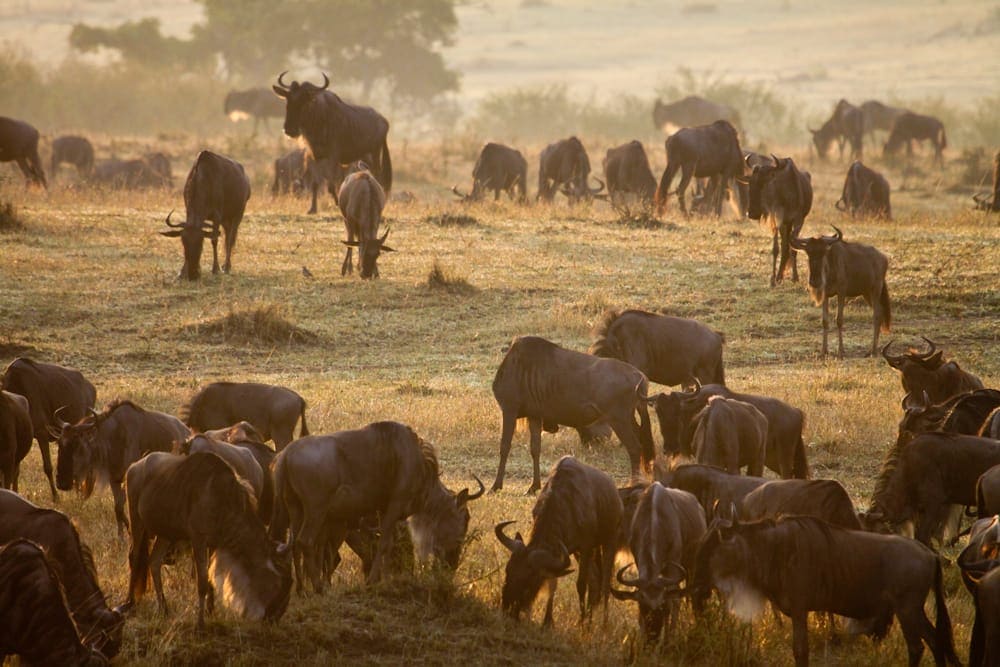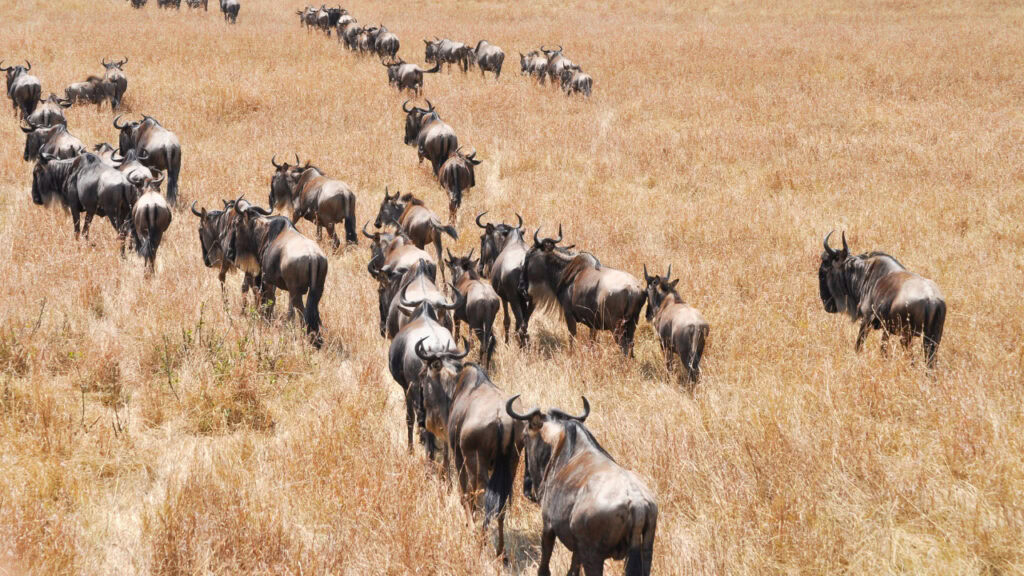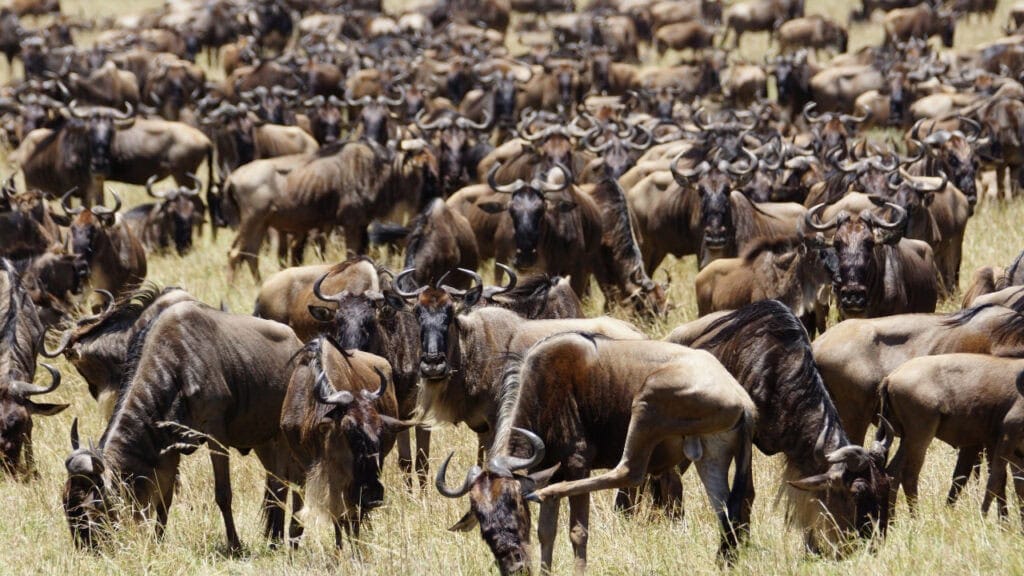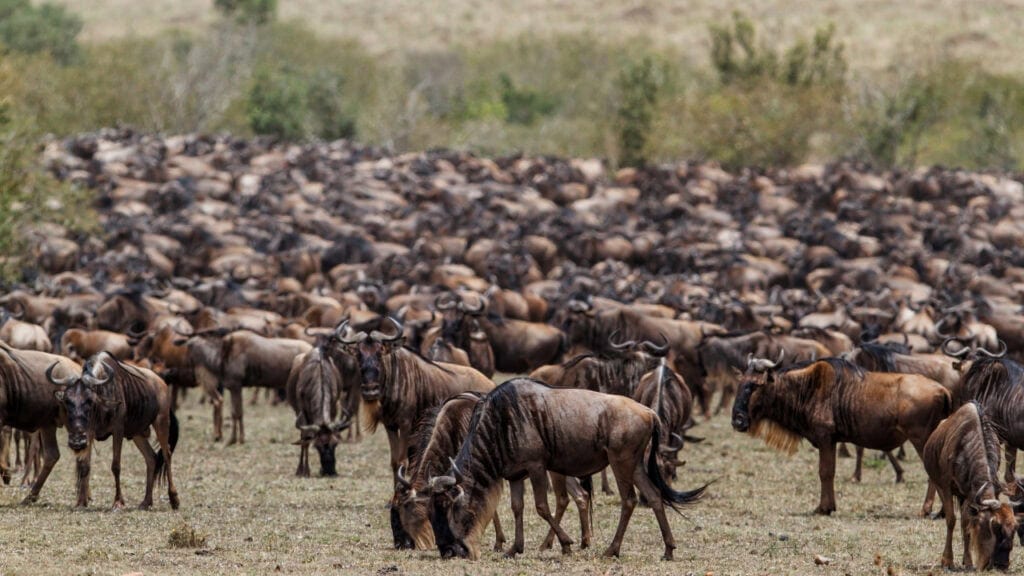Nestled away from Kenya’s famed Great Migration lies a more intimate wildlife spectacle – the annual Loita Migration of wildebeest within the vast wilderness of Masai Mara National Reserve. Each year, around 100,000 wildebeest embark on an arduous yet cyclical journey across the Mara grasslands in a seasonal pattern that sustains the local ecology.
The migration begins in November when the first scattered rains rejuvenate the Loita Plains. Hundreds of thousands of wildebeest gradually gather into large herds to graze on the emerald grasses.

As the dry season approaches in June, the teeming herds begin their march into Masai Mara seeking greener pastures. Amidst the migration are newborn calves learning the ancient routes from their mothers.
Crossing crocodile-infested rivers, the herds barrel on, finally reaching the open grasslands and woodlands of Masai Mara at the peak of the dry season in August. Not long after their arrival, the paradise transforms into a battle for survival as the land dries out.

By October, the first showers sweep the plains, signaling the herds’ return to their wet season grounds in Loita to complete the migration cycle.
Unlike the larger Great Migration crossing into Tanzania, the Loita Migration remains entirely within Kenya’s borders, tracing a localized, circular path critical for maintaining the Mara’s ecosystems. The hooves and dung of these migrating herds disperse nutrients and stimulate grass growth, sustaining the diverse wildlife that flourishes here.

For visitors, witnessing this intimate migration is a gateway into the authentic rhythms of the Mara, away from crowded tourist circuits. Observers can relish in quiet solitude as Africa’s splendor unfolds before their eyes – new calves steadying their footing, crocodiles flashing their teeth, giraffes gracefully cantering by.
The nuances of each migration story are distinct, but equally vital in preserving the Mara’s legacy.

We spoke to some veteran safari guides and camp operation managers who are on the ground in Kenya and have been tracking this migration. See what they have to say here:
Patrick Reynolds, Operations Manager at the Governors’ Camp.
“Unfortunately the Loita Migration is pretty much dormant in that the resident wildebeest migration has not moved into the Loita Hills over the past 10 years due to human settlement.
The wildebeest have now begun to reside in the north east conservancies to include the Mara North conservancy, Olare Orok conservancy, Lemek conservancy and the Naboisho conservancy.”
Empap Meshack Sayialel, Safari Guide at Gamewatchers Safaris & Porini Camps
“The Loita wildebeest are still roaming around and gave birth to their newborns in the Olare Orok conservancy. However, a large number are further east in the Naboisho and Olare conservancies.”
Our Herdtracker Observations
In the long run, we expect the grazing pressures of the area around the Loita Hills to force the Loita migration into the great Masai Mara earlier than expected. This may have a huge impact on how long the Great Migration ,travelling from the Serengeti in Tanzania can afford to stay in the Masai Mara before they run out of grazing land.
We are monitoring the annual movements and keeping an eye on substantial shifts in arrival dates of both migrations from both countries.

Generally the wildebeest from the Serengeti continue moving throughout the Mara ecosystem until early to mid-October. The Loita migration however, begins at the Loita Plains to the North East of Naboisho, an event that brings an estimated 200 000 wildebeest into the Mara from their dry homeland in May.

They will graze in Naboisho and the surrounding areas until the next big rains hit the Loita Plains, often keeping them here until March the following year. The earlier Serengeti migration makes May and June one of the best times of the year to visit Mara Naboisho Conservancy.
The grass is still green, and game is present in large numbers. This is an affordable option for a migration safari; low-season prices and less tourist numbers with the added benefit of high-season game viewing.

Although the Loita migration would not cross the Mara River to go south into the northern Serengeti, it still provides an incredible migration experience with wonderful wildlife interaction. Enjoy private conservancies that offer walking, night drives and off-road driving.
To see more of our Loita migration safaris in Kenya, take a look here, or see our Herdtracker app that tracks both the Serengeti and Masai Mara migrations so that you can adequately plan your safari.
Author: Tiffany Bowers
Published:
Last Update:
Part of the Kenya Safari Collection